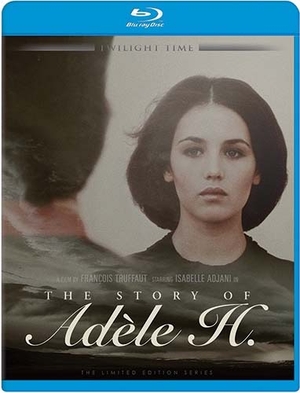
“A 19th CENTURY
STALKERâ€
By Raymond Benson
The
youngest daughter of the great French author, Victor Hugo, was a victim of
schizophrenia. Although she was devastatingly beautiful, history tells us that Adèle
Hugo was seriously disturbed.
Around
the time of America’s Civil War, Adèle became fixated
on a British soldier, one Lieutenant Pinson. She followed him across the
Atlantic to Nova Scotia, where he was stationed, for she was convinced that he
loved her and would marry her. In fact, the couple had experienced a brief
relationship in England (while Victor Hugo was living in Guernsey, in exile
from France), but Pinson ultimately rejected Adèle and wanted no
more to do with her. Even though he was obviously a rakish cad, the girl became
obsessed with the man and went to great lengths to pursue him.
These
days we would call it stalking.
François
Truffaut’s The Story of Adèle H. is the true account of a young woman’s
descent into a kind of madness that was sadly misunderstood in the 1800s, for
after the events in the picture took place, the real Adèle spent the rest of her life in an institution.
The
film is one of the director’s best. Beautifully shot by Nestor Almendros, it garnered
a Best Actress Academy Award nomination for Isabelle Adjani, who in 1975 was
the youngest actress ever to be nominated in that category. For my money, she
should have won (Louise Fletcher snagged the award for One Flew Over the Cuckoo’s Nest; but, arguably, time has shown that
Adjani went on to a long career of remarkable work, mostly in French films,
whereas Fletcher...?). I remember seeing Adèle H. on its release and falling head over heels
in love with Adjani. Despite playing a woman that all sensible men should run
away from, her physical beauty was indeed intoxicating. Those expressive blue
eyes worked wonders. It is this element of “tragic beauty†that makes
Truffaut’s picture all the more powerful.
Adèle
lies and cheats and deceives everyone she meets in order to get closer to
Pinson (played by Bruce Robinson). She
creates fantasy scenarios in her head about her relationship with Pinson, and describes
them to anyone who inquires. As he continues to reject her, Adèle attempts to
destroy the soldier’s reputation. She also cruelly leaves
other men in her wake who probably could have cared for her and loved her
deeply—such as the handsome but lame bookseller who dotes on her. Instead, she
ends up breaking his heart. She constantly
lies to her father in correspondence (Hugo is very much a character in the
story, even though he is never seen) and it’s implied that her parents’ worry
and concern for their daughter is the cause of Madame Hugo’s untimely death. By
the end of the picture, the tale has moved to Barbados, where Adèle
has pursued Pinson yet again—and it is here that she finally succumbs to her
madness.
At
the conclusion, we find ourselves almost admiring the poor woman for her
determination and perseverance, even though we know she’s headed for the
madhouse. Her vulnerability and desperation is heartbreaking. The price of
beauty? Perhaps, but Truffaut doesn’t provide an opinion... nevertheless, he
directs the film with a this-is-how-it-was objectivity, utilizing his signature
mise-en-scène of short scenes,
some voice-over narration, and lyrical, sweeping story-telling. The director
was very good with period pieces such as Jules
and Jim, The Wild Child, and Two English Girls. The Story of Adèle H. is another
excellent entry in that category of Truffaut’s body of work, as well as a fascinating
character study and canny look at 19th Century relationships.
Twilight
Time’s new Blu-ray release looks wonderful, but then Almendros was one of those
great European cinematographers who was particular good at capturing the
splendor of period settings. The limited edition release of 3000 units is short
on extras—there’s an audio commentary by film historians Julie Kirgo and Nick
Redman which is interesting, an isolated score track (the orchestral music by
Maurice Jaubert is fabulous), and the theatrical trailer—but the quality of the
digital transfer is worth the price of admission.
This
is a film as beautiful as its lead actress—don’t miss The Story of Adèle H.
CLICK HERE TO ORDER FROM SCREEN ARCHIVES